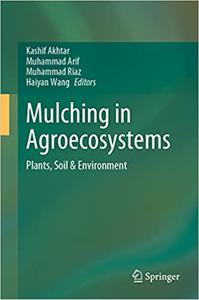
Kashif Akhtar, "Mulching in Agroecosystems: Plants, Soil & Environment"
English | ISBN: 9811964092 | 2022 | 411 pages | PDF | 10 MB
This book provides insights into recent developments in the use of mulching in agroecosystems with emphasis on the major pros and cons. Increase in human population, climatic changes and agricultural intensification have put enormous pressure on soil and water resources. As a result, we are confronted with challenges to enhance nutrient and water use efficiencies and conserve soil organic matter without compromising crop yields and food security. Increasing the soil organic matter (SOM) via residue return increased nutrient availability and soil physical and biological properties. Management practices, such as straw mulching or incorporation, have significant effects on soil health. Straw addition also increases functionality related to carbon and N metabolism via increasing the microbes and thus greatly contributes to CO2 and N2O emissions. However, the co-use of organic and inorganic fertilizer reduces the N2O emission without compromising crop yield. Mulching has long been advocated to conserve soil moisture and increase the efficiency of macro- and micro-nutrients by improving soil physical, chemical, and biological properties. These effects of mulch are translated into better crop yields while improving soil health and quality in the long run. Therefore, the use of mulching techniques is on the rise in organic as well as conventional agriculture. The book is of great interest for researchers, academics, agriculture extensionists, soil and plant scientist, fertilizer industry, farmers, agro-industrial workers, farm managers, NGOs, and climate and civil society activists.
Read more
Buy Premium From My Links To Get Resumable Support,Max Speed & Support Me
Links are Interchangeable – No Password – Single Extraction










Leave a Reply
You must be logged in to post a comment.